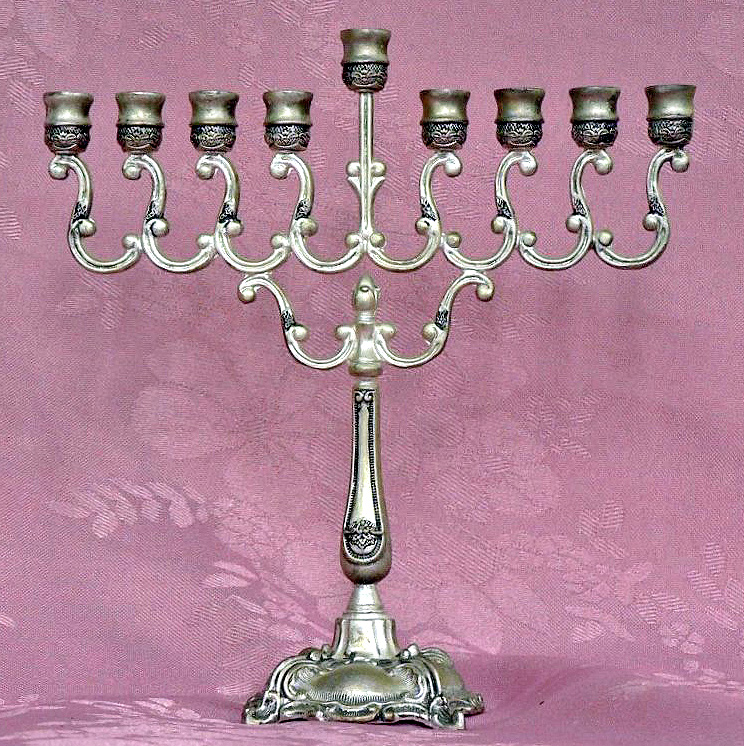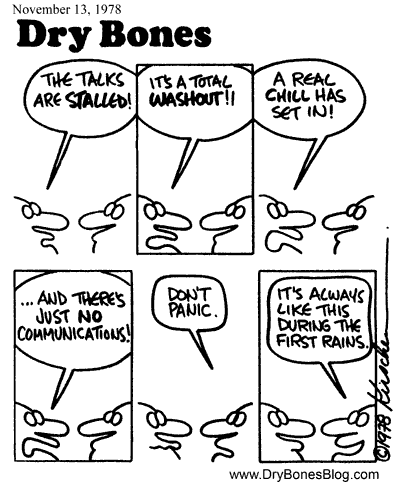
Chanukah this year (5768 Jewish year, 2007 secular year) starts on Tuesday night 4 December. Here are some FAQ...and FGA (frequently given answers!) References are to chapter and ver...paragraph in the
Shulchan Aruch (also see
here) and
Rema, section
"Orach Chayim" plus other sources which are indicated on the spot.
Here is a summary of the Chanukah story.
---
Chanukah is of course a Hebrew word. Since we sometimes need to transliterate Hebrew words into English, we need to find the right characters in the English language. Since Hebrew, like many other languages, has different dialects and pronounciations (well, e ba gum eh!) it can be transliterated in different ways. Personally, I go for Chanukah.
The best way to read it is obviously in Hebrew.
Take a look at the Hebrew alphabet and how to pronounce it. If you want to learn how to read Hebrew or you want to brush up your reading, please email
me to arrange some practice or for MP3 recordings of some of the major prayers.
What should I eat for Chanukah?Well, far be it from me to offer nutritonal or culinary advice (unless we are talking
this, of course and
this in particular). Whilst there is no requirement to have sit down celebratory Chanukah meal (unlike Purim), since one of the Chanukah miracles was performed with oil, the custom arose to eat oily foods. Latkes and doughnuts are often trumpeted as favourites - look out for Israeli news stories about the biggest number of
sufganiyot (doughnuts) to be baked in the Middle East etc.) but
Rema (670:2) mentions cheese as another option to commemorate the heroine
Yehudit who used cheese to complete her mission.
Although far be it from me to offer
nutritional advice, you do not have to eat any of these fatty foods and may simply prefer to garnish your salad with olive oil (all pure olive oils are kosher).
Betayavon/bon appetit!
How many candles should I light?
You should light one candle per night, plus an extra candle called a
shamash (671:5)
. Use the shamash for lighting the other candles. The first time that you light the candles, 3 berachot (blessings) are recited. Subsequently, you just say the first two. You can find the berachot and explanations in the
green Siddur on page 732 and in the
Artscroll Siddur on page 782.
What order should I light in?
When facing the Chanukiah (Chanukah candelabra), load the candles from the right of the Chanukiah. Each night, add a candle to the left and light the 'newest' candle first, then moving to the right (yes, religiously as well - ho ho ho).
How many Chanukiot (pl.) do we light and what if I am prevented from lighting a Chanukiah?
You can light one Chanukiah per household or each individual can light one Chanukiah for themselves. If one member of the household is unable to be present for the lighting of the candles and is unable to light candles for themselves afterwards (eg if you are a doctor working a shift that precludes you from lighting candles) then you should appoint another member of your household to act as your agent.
What if I do not have a Chanukiah?
You do not need a 'special' Chanukiah. You can use any candles, such as tea lights resting on an appropriate fire resistant surface. Just make sure that the candles are in a straight line (671:4) to make sure that each candle is distinct.
Where should I light the candles?
Ideally, the candles should be lit by a window facing the street. Otherwise, if you live in a flat with no window facing street level, light the candles in a place where the family or household members will see them.
What can I use for Chanukiah lights?
If you do not use candles, use olive oil (673:1).
What about electirc lights?
Rabbi Ovadia Yosef, a former Chief Rabbi of Israel, was presented with this question. In his work,
"Yechaveh Da'at" (4:202) Basing his answer on the primary sources in the Talmud and subsequent judicial opinion, he ruled that electric lights do not work for Chanukah.
Have I performed the Mitzva of lighting Chanukah lights if I go to a friend's house or a public lighting such as at shul?
Chanukah lights are kindled per household so you need to light them at home or at the place where you are staying if you are away from home. (671:7)
When should I light the Chanukah candles?
The earliest time is called Pelag Hamincha. In London during Chanukah, this is at approximately 3.10pm. The ideal time is at nightfall (the time when Shabbat goes out for Shabbat at the end of that week). Otherwise the Chanukah lights can be lit later on at night when you come home. Try to make sure that either somebody else in the house is up when you light or that you light before midnight i.e a time when people are still on the streets.
If it later than this when you get home and nobody else is awake at home, then light the candles without the
berachot. Email
me if you want to know why.
How long should the lights last for?
The Chanukah lights need to burn for at least half an hour during dark.
Can I use the Chanukah lights for anything else?
No! Light them, look at them and contemplate the Chanukah miracles. As we sing in the haneirot halalu, one of the Chanukah songs, the lights are solely for the purpose of the mitzva of Chanukah lights and not for any other purpose.
What should I do on the Friday of Chanukah?
On Friday, light the Chanukah candles before the Shabbat candles. This year (December 2007), the earliest time (pelag hamincha) in London for lighting the candles is 3.10pm and Shabbat comes in at 3.37pm. Once you have lit the Chanukah candles, then light Shabbat candles. If you have not lit before Shabbat comes in then you should neither light Shabbat nor Chanukah candles once Shabbat has started.
Since the Chanukah lights need to burn for at least half an hour during dark, make sure that use big enough candles. Tea lights are particularly good for this purpose.
What should I do after Shabbat?
At home, you should make Havdala first and then light Chanukah candles.
The only exceptions are if: 1. you have already said 'Ata Chonantanu' in the Maariv amida, 2. heard Havdala in Shul or 3. said the phrase 'Baruch Hamavdil bein Kodesh lechol'. See 681:2
What should I do if I am guest at somebody else's house?
Either you should light your own Chanukah lights or give your host some coins to show that you are a partner in his or her lighting.
Can a child light the Chanukah candles?
A child (ie girl under 12, boy under 13) can light their own Chanukah candles but a child should neither say berachot nor light on behalf of an adult (ie boy above 13, girl above 12).
Are there any special prayers for Chanukah?
Hallel is said each day of Chanukah. The paragraphs of
Al Hanisim and
Bimay Matityahu are added into the
Amida prayers on Chanukah. The Torah is also read each day of Chanukah.
Psalm 30 is recited when the Chanukiah is lit in Shul.
The most famous Chanukah song is
'Maoz Tzur'. To check it and other Chanukah songs out click
here but not
here.
Only if you like to or have run out of other things to do...!
Chanukah Samayach / Happy Chanukah to all.






